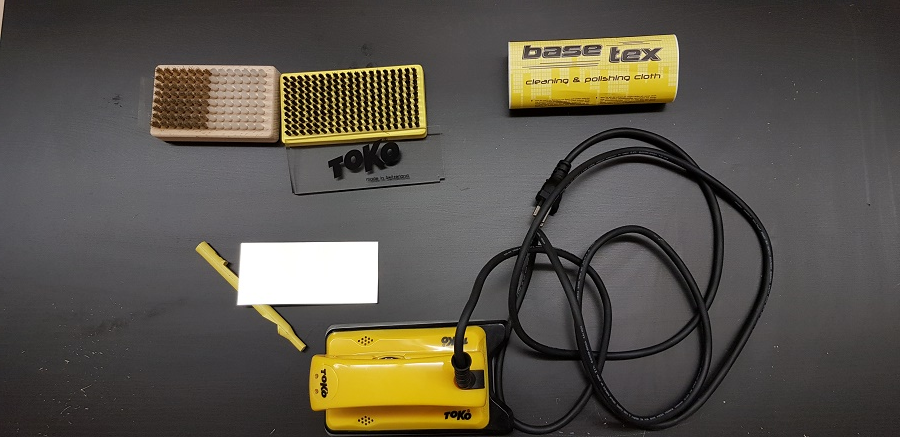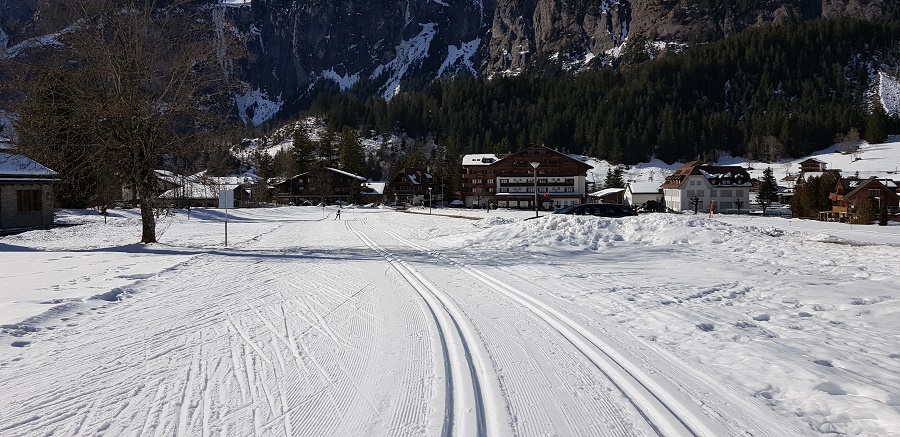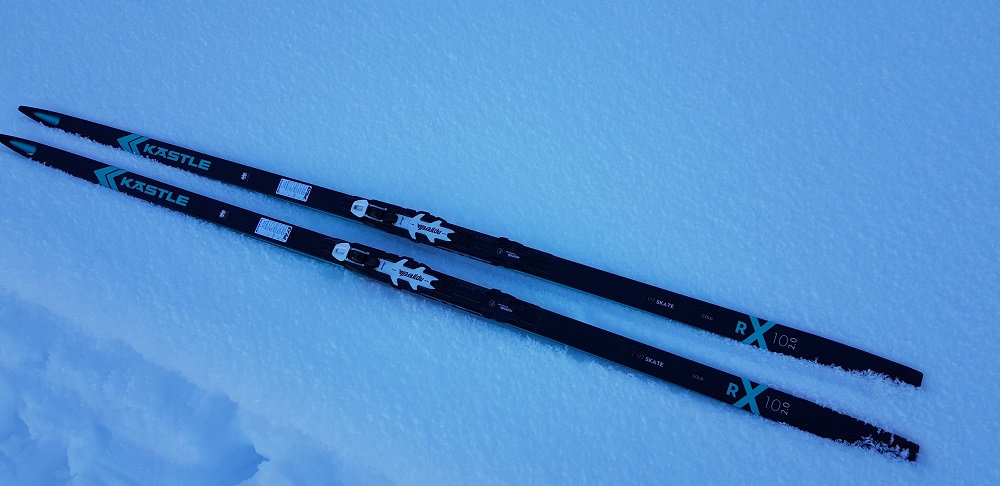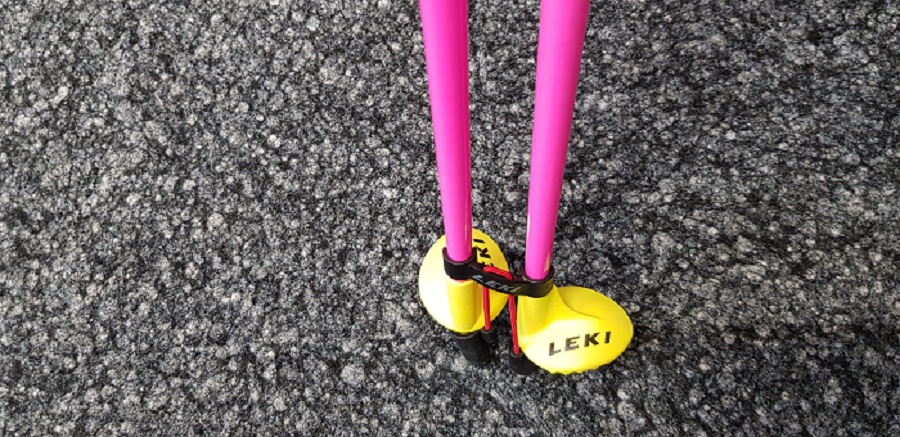- Home
- Ski Base Structure
Ski base structure: Gain up to 10 percent more time over your competitors
How to prepare the right ski base structure to improve your glide performance
The ski base structure has a significant factor that affects the glide of your skis. There are two ways to do a structure into the base. One, is through a lasting grind and the other through a manual structure made by a structure imprint tool.
During the last few years, the use of a hand structure imprint tool has increased. It’s a fast method that allows you to continue to use the same racing skis for different competitions. Thus, it creates the possibility to have a different ski base structure in every race to adapt to the conditions.
The bases of race cross-country skis are normally made of ultra-high molecular polyethylene. The use of polyethylene is of big advantage because it’s easy to manipulate its surface.
Thus, one of the most important factors for best glide is when you have the right structure in reference to the given snow conditions. Tests have shown that when you applied the right ski base structure, it can account for up to about 10 percent of the skis’ gliding speed on snow.
Basically, a ski base structure can be divided into a long-lasting structure, which is through grinding or scraping. Or through a hand-made manual structure, which you can groove in (rill) with a structure imprint tool before each ski race.
Stone grinding your skis
The process to change the ski base surface that is achieved with a variety of different structures is called “stone grinding”.
But it takes an experienced technician who understands the mechanical factors. Such as the stone speed, ski pressure, thermal effects, and many other small details.
For this reason, not all stone-grinding could result in a flat ski base to get top gliding skis. In fact, when it’s done poorly by an unqualified employee in a sports shop, it could damage your skis. Besides that, make also sure that they use a stone grinder and not a belt grinder like they offer in some downhill or XC ski shops.
My recommendation is to let your XC racing skis stone-ground at least once a year, usually at the beginning of the season. For that, look for a ski shop with knowledgeable service people. Then for the rest of the season, do manually groove the ski base structure with a structure device.
If you are an ambitious Masters XC racer, then it can be a good idea to let your skis stone grind more often.
 A few tools like different brushes, scrapers or a waxing are a necessity for waxing your skis. For rill in a manual structure, you need a Swix Riller or a Toko Structurite toll to make your ski base structure.
A few tools like different brushes, scrapers or a waxing are a necessity for waxing your skis. For rill in a manual structure, you need a Swix Riller or a Toko Structurite toll to make your ski base structure.The manual structure
The advantage of the manual structure is that it can be adjusted precisely to match the exact snow conditions at the competition site. Another benefit is that you can push down into the ski with the structure tool which creates an elastic deformation.
After race day, you can then erase again the imprint and make for a new ski base structure for the next competition.
For the grind, you use a hand-structured tool that all ski wax companies offer. With such a hand structure device, a structure can be easily embossed into the ski base.
The ski technicians working at World Cup races use many different imprint steels (rollers). But, for recreational XC ski racers, a standard device with 3 imprint steels (also called rollers) is enough. They are:
Yellow Roller: Snow temp –6°C to 0°C (21F to 32F). Coarse X-structure for warm and/or wet snow.
Red Roller: Snow temp -12°C to -4°C (10F to 25F). Medium Diagonal structure for medium snow temperatures.
Blue Roller: Snow temp -30°C to -10°C (-22F to 14F). Fine Linear structure for cold and/or course and/or artificial snow.
I have found that either the Swix Riller or the Toko Structurite are the best main hand structure tools on the market. Both are necessary if you are an ambitious ski racer. Pressing down with the structure tool to make the grooves is only temporary and after you wax the skis a few times, it will return in its initial form.
The Toko structure device has the potential of pressing in both a linear and a broken ski base structure.
So, the Swix Riller is less varied then the Toko tool. But, it does a superb job in wet snow conditions where a very coarse structure is required. It can cut a much deeper linear structure than the Toko device and for this reason it will last quite a bit longer.
Handy recommendations on how to use manual ski base structure tools
There aren’t specific rules when to use the various base structures.
Most of the time, linear structure and broken linear structures (V) are used in classic ski races.
Screw and cross ski base structures work better in free-style (skating) races.
1. Check the temperature, air humidity and type of snow.
2. Is the ski race held in the skate or classic technique?
3. Decide if you want a stone-grinding structure.
4. Set the hand-structure as the last step, after brushing.
Note: the use of the different groove-making steels will vary with the underlying stone grind.
Any ski base that has a fine structure can be changed to
“medium” structure by using the coarse imprint steel. This way you will be able
to make a fine stone grind fit to medium conditions. However, you can’t make
the opposite, will say to make an already existing coarse stone grind into a
fine structure with a fine groove bit.
- A manually produced ski base structure should be set after waxing and application of liquid Cera F as well as brushing.
- After setting the structure, brush once more with a very soft “Blue Nylon brush”.
- The manual structures should always be applied on race day because the intended effect could be reduced over time.
- For skating skis, start with the structure tool from the tip applying light pressure for the first third of the base. From there, you slowly increase the pressure from the front of the binding using medium pressure until the back of binding. Then you keep continuing ll the way to the tail of the ski using firm pressure.
- For classic skis, you can use a constant pressure over the whole base but use a bit softer pressure on the tip section.
- If you use two or more structure bits in combination, always start by using the coarser bit.
- With higher air-humidity, you need a coarser base structure. In case of uncertainty, better use a finer structure.
- Coarse stone-grinding combined with a finer hand structure is ok. But better is a finer stone-ground combined with a coarse hand structure.
- On wet snow conditions, apply harder pressure on the structure tool.
- Run the structure imprint steels (rollers) two times over the ski base.
So, that’s all you need to know about getting the right structure on your ski base for faster skis.
- Home
- Ski Base Structure


